For centuries, devout Christians have flocked to the Italian city of Turin to pay their respects to one of the most famous relics in the world.
The Shroud of Turin is a piece of linen, measuring 14ft 5in by 3ft 7in, that bears a faint image of the front and back of a man.
Many believe that this image was created when Jesus was wrapped in the venerated shroud shortly after his death on the cross 2,000 years ago.
However, according to a new study, the Shroud of Turin was never laid on Jesus’ body.
Brazilian 3D designer and researcher Cicero Moraes, an expert in reconstructing historical faces, says that the shroud is nothing more than a ‘masterpiece of Christian art’.
Mr Moraes used digital modelling software to examine how cloth drapes over the human body compared to a low, flat sculpture of a body.
These results, published this week in the journal Archaeometry, show that the shroud’s distinctive pattern could only have been produced by a sculpture.
In his paper, Mr Moraes wrote: ‘The Shroud’s image is more consistent with an artistic low-relief representation than with the direct imprint of a real human body.’
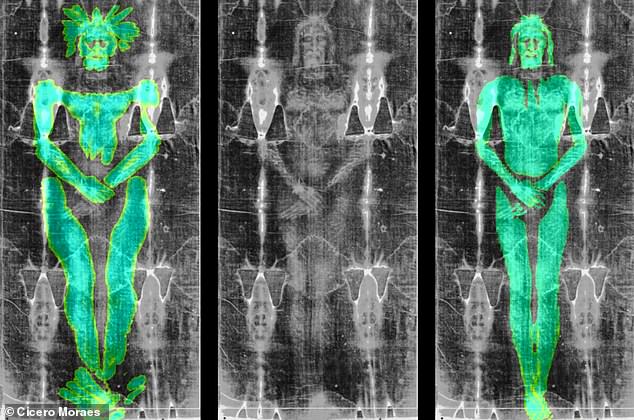
New analysis shows that the images on the Shroud of Turin (centre) could only have been produced by laying the cloth over a flat sculpture (right) rather than over a human body (left)
To understand how the image on the Shroud of Turin might have been created, Mr Moraes created two digital 3D sculptures.
The first was of a complete human body, while the second was of a type of flat sculpture known as relief.
Using various 3D simulation tools, Mr Moraes digitally draped fabric over these two sculptures and measured where the fabric touched the material.
Mr Moraes then compared the images left on the virtual fabric to pictures taken of the Shroud of Turin in 1931.
This revealed that the fabric draped over the relief sculpture was a near-perfect match for the Shroud.
Meanwhile, the image created by draping fabric over a real human appeared to be wide and distorted.
Mr Moraes says this is due to something called the ‘Agamemnon Mask effect’ – named for the unusually wide death mask found in a tomb in Mycenae in Greece.
When you try to project a 3D surface like the human face onto a flat plane like a piece of fabric, the result is extremely distorted.
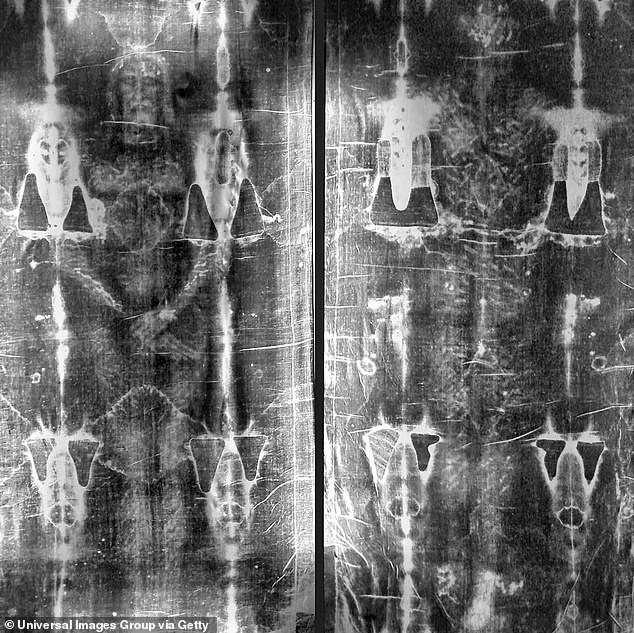
The Shroud of Turin is a piece of linen, measuring 14ft 5in by 3ft 7in, that bears a faint image of the front and back of a man. But a study now says that the human body would not have produced these marks
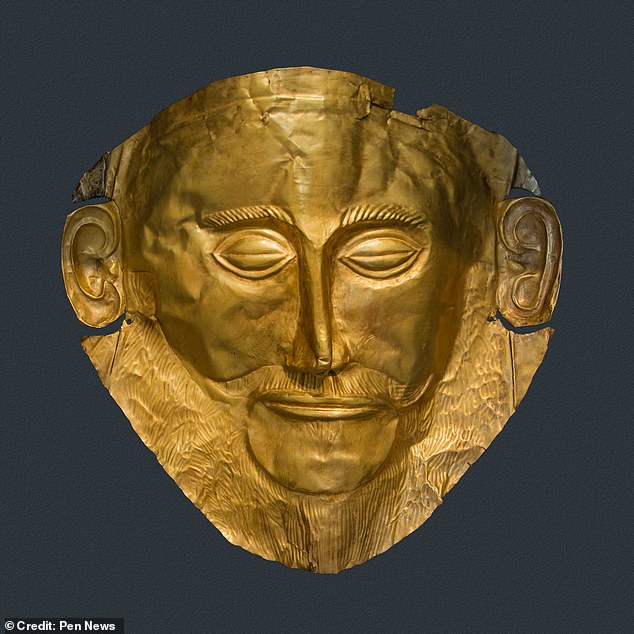
This is due to something called the ‘Agamemnon Mask effect’ – named for the unusually wide death mask found in a tomb in Mycenae in Greece (pictured). This effect means that a flat image taken from a 3D body will look unnaturally distorted, unlike the images on the Shroud of Turin
Imagine covering your own face with paint and pressing it into a paper napkin.
The image left on the napkin would not resemble a portrait of you, but rather appear stretched and warped.
For this reason, Mr Moraes believes that the images on the Shroud of Turin could not have been produced by laying it over the body of Jesus.
Mr Moraes told Live Science: ‘The image on the Shroud of Turin is more consistent with a low-relief matrix.
‘Such a matrix could have been made of wood, stone or metal and pigmented – or even heated – only in the areas of contact, producing the observed pattern.’
The first recorded mention of the Shroud of Turin dates back to the 14th century, and the relic was almost immediately accused of being a fake.
Modern carbon dating, a way of measuring the age of natural materials using radioactive isotopes of carbon, carried out in 1989, placed the Shroud’s creation between 1260 and 1390 AD.
That would mean the linen in the Shroud was still growing over 1,000 years after Jesus’ death, making it impossible that the Shroud is a genuine relic.
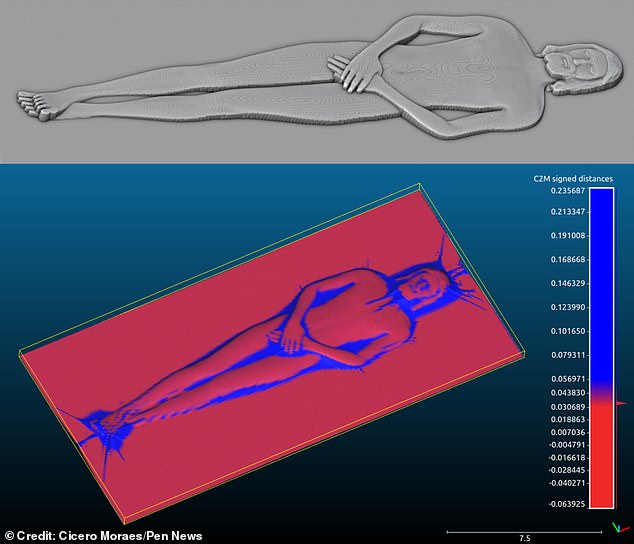
Brazilian 3D designer and researcher Cicero Moraes compared how fabric would drape over a human body and a flat sculpture known as a low relief. He found that a low relief would produce images that are an exact match for those found on the Shroud
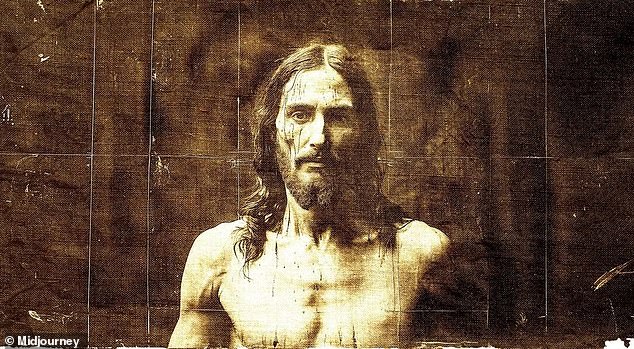
This means that the Shroud of Turin was really a piece of medieval art, rather than a relic capturing the face of Jesus shortly after his death. Pictured: An AI reconstruction of the face depicted by the Shroud of Turin
During this part of the Medieval period, low-relief depictions of religious figures were extremely popular decorations for structures such as tombstones.
According to Mr Moraes, this makes it much more likely that the shroud was created as a piece of art during medieval funerary practices and later came to be considered a genuine relic.
Despite claims that the ancient relic may be a hoax, many still maintain that the Shroud of Turin really is the burial shroud of Jesus.
Last year, Professor Liberato De Caro, a committed Catholic and a deacon in his local church, claimed to have an ‘enormous quantity of evidence’ to prove the Shroud’s legitimacy.
Professor De Caro’s most recent analysis, carried out in 2022, claimed to have shown that the Shroud could actually be dated back to the time of Jesus’ death using a novel X-ray method.
However, the method used by the researchers was entirely unreliable and had been created by Professor De Caro for the specific purpose of proving the Shroud was a genuine artefact.
Although their results were widely publicised, even the Center for Sindonology in Turin, an organisation dedicated to proving the shroud’s authenticity, urged people to be cautious of these conclusions.
Similarly, an analysis published last year examined samples of the Shroud taken using adhesive tape in 1978 with modern microscopy methods.
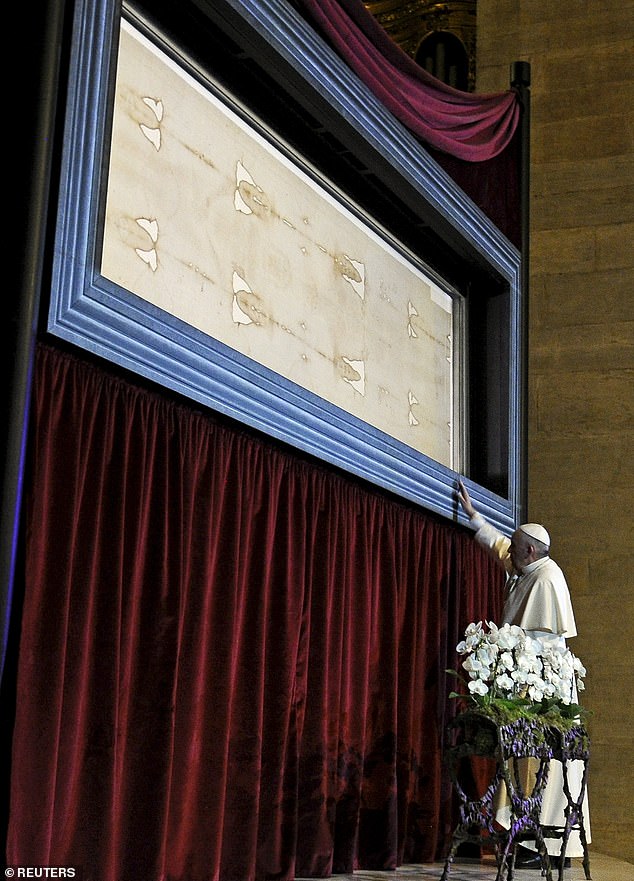
The shroud first appeared in 1354 in France. After initially denouncing it as a fake, the Catholic church has now embraced the shroud as genuine. Pictured, Pope Francis visits the Shroud of Turin in 2015
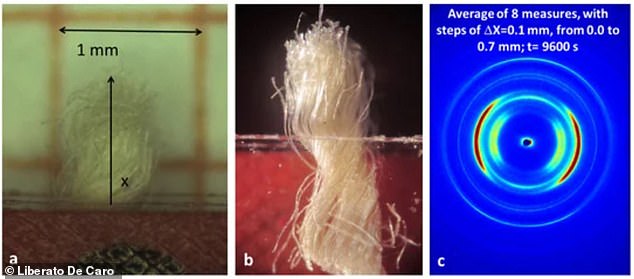
The scientists obtained small samples of the shroud of Turin (left) and exposed it to Wide-Angle X-ray radiation to create an image of the linen sample (right) which was used for dating. Although these methods dated the Shroud back to 0 AD, the results have been strongly criticised
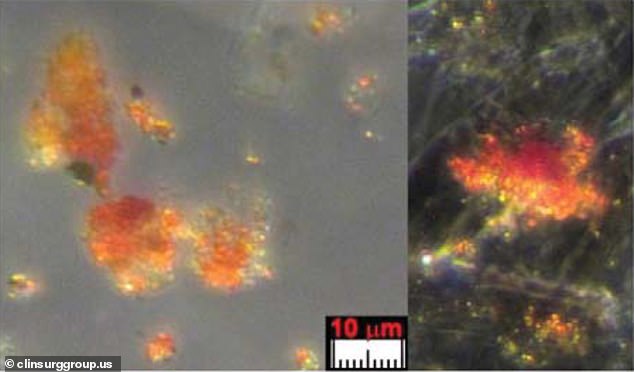
A previous study analysed blood samples taken from the shroud in 1978, which were collected using adhesive tape. This blood, according to the study, showed signs of disease, trauma and radiation
This research, conducted by an engineer from the University of Padua in Italy, found tiny blood particles showing signs of organ failure, trauma, disease and radiation.
Traces of creatine were also identified in the shroud sample, which is released into the bloodstream when a person undergoes muscle breakdown or some type of trauma.
However, forensic analysis has shown that the ‘blood stains’ on the shroud are inconsistent with someone lying down and could only have been made by a standing figure.
This doesn’t match the Biblical account in which Jesus was wrapped in the Shroud after being removed from the cross.
Likewise, scientists have questioned whether the blood was part of the original Shroud.
Dr Lawrence Kobilinsky, a forensic scientist who is a professor emeritus at John Jay College, previously told the Daily Mail that the ‘blood’ was likely a ‘secondary thought.’
Indeed, American chemist Dr Walter McCrone, who analysed the tape strips in 1978, found the image consisted of red ochre and a gelatin solution.
‘The simplest explanation is that this shroud was placed over a statue covered with pigment in certain areas, which transferred to the cloth, and gave it this three-dimensional configuration when you do the right kind of photography,’ Dr Kobilinsky said.












